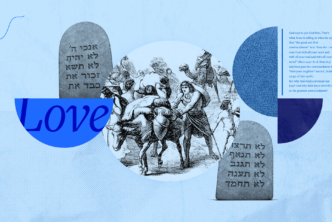Baptist Roots
Where did Baptists come from and, historically, what are their beliefs? The majority of historians agree that today’s Baptists were derived from three major sixteenth-century streams: Particular Baptists, General Baptists, and Seventh-day Baptists. By the eighteenth and nineteenth centuries, these denominations birthed a multitude. Separate Baptist, Primitive Baptist, American Baptist and Southern Baptist are just a few of today’s 100-plus Baptist denominations. Each of the three major Baptist groups claims a different line of descent. The Particular Baptists claim a heritage going back to the Protestant Reformers and Puritans of the fifteenth and sixteenth centuries. The General Baptists trace their roots from the earlier Anabaptists of the fifteenth century, and the Seventh-Day Baptists came later, in the sixteenth century. All three major Baptist denominations started in England.
Other Seventeenth-Century Baptists
The Seventh-Day Baptists, known to follow the Judeo-Christian tradition of worshipping on the seventh day of the week, were never large in number, nor are they today. They number less than 50,000 worldwide. The General Baptists were named for their theological stance of having a general, and thoroughly Arminian, view of the atonement. Lead by John Smyth, they were a non-creedal denomination. By the eighteenth century, English General Baptists had mostly moved into Unitarianism, while most of America’s General Baptists were overtaken by the diverse strands within the Regular Baptist denominations.
The Particular Baptists
Particular Baptists were also commonly called Strict Baptists because of their practice of closed communion, their theological stance on Christ’s definite atonement for His elect, and their two-office congregational polity. It was the Protestant forerunners, like the Reformers & Puritans, that brought about a strong confessional emphasis among Particular Baptists’ theology. The Particular Baptists first appeared in a London church organized by Henry Jacob following his exile from Holland. This church was founded on a basis of confession of individual faith and of a covenant, and it contained both Independent Puritans and radical Separatists. In 1633, the issue of who would administer baptism splintered the two camps. In 1638, the first Particular Baptist Church was established in London under the leadership of John Spilsbery.
The theology of these Baptists appealed to the nation’s prevalent Calvinism and offered no obstacle to the mass of Englishmen. With the rapid growth of the Particular Baptist came serious accusations, such as Pelagianism and Anarchy. This is important to note because both groups were part of the radical wing of Anabaptism; thus, Anabaptism cannot trace its historical roots to the Particular Baptist denomination.
By 1644, the seven Particular Baptist churches in London were quick to follow their Protestant forerunners’ confessional examples. To document their doctrinal differences from the General Baptists and Anabaptists, the seven closely associated and London-based Particular Baptist churches prepared to published their own confessional statement of theology.
The London Confession of 1644 served as an apologetic theology, defending Particular Baptist views against the Arminian General Baptists and other radical groups like the Anabaptists. Henry C. Vedder called it “one of the chief landmarks of Baptist history.” There were five key futures that made it different from the multitude of Protestant Reformed Confessions of its time:
- Two representatives from each of the six Particular churches and three from Spilsbery’s church were included in the signatories of the confession.
- It had a strong Christological focus.
- It was building a confessional theology that gave structure to the New Testament’s administration of the Covenants of Grace—not attempting to reform the National Church.
- It charged that the act of baptism was to be a complete immersion of the individual and gave an outline for conduct in case of civil persecution.
It gave the Particular Baptists of its time a distinctive Baptist theology of the church, all while affirming the Reformed view of salvation.
The Particular Baptists and Calvinism
1644 brought growth for the Particular Baptists as they more clearly defined the doctrinal standards in their confessional statement. 1645 brought trouble.
Arminian General Baptists charged the Particular Baptists with insufficiently addressing free will, communalism, and falling from grace, especially within the L0ndon Confession of 1644’s first edition. The General Baptists’ response to the London Confession of 1644, documented in a pamphlet titled “The Foundation of Free Grace Opened,” gave their dictional stance against limited atonement, clearly siding with Arminian theology.
The differences and disagreements between 1645’s General and Particular Baptists gave rise to a second edition of the 1644 London Confession and of the First London Baptist confession of 1644. Third and fourth editions would be made later in 1651 and 1652. As William L. Lumpkin commented about the Particular Baptists,
“In the Army of Cromwell, Baptists had distinguished themselves and had risen to positions of leadership . . . (Calvinist) Baptists were everywhere in prominent positions, and no longer lived in fear of the King and Parliament. The Westminster Confession has appeared in 1646, and by comparing the London Baptist Confession with it men could see that Baptists indeed belonged to the mainstream of Reformed life.”
Calvinistic theology can be seen in a number of areas within the Particular Baptist’s confessional documents. Here are just a few examples taken from the second-edition London Baptist Confession of 1646.
Total Depravity
Article VI: first Eve, then Adam being seduced did wittingly and willingly fall into disobedience and transgression of the Commandment of their great Creator, for the which death came upon all, and reigned over all, so that all since the Fall are conceived in sin, and brought forth in iniquity, and so by nature children of wrath, and servants of sin, subjects of death, and all other calamities due to sin in this world and for ever, being considered in the state of nature, without relation to Christ.1
Unconditional Election
Article V: Subject to the eternal wrath of the great God by transgression; yet the elect, which God has loved with an everlasting love, are redeemed, quickened, and saved, not by themselves, neither by their own works, lest any man should boast himself, but wholly and only by God of His free grace and mercy through Jesus Christ.2
Limited Atonement
Article XXI: That Christ Jesus by His death did bring forth salvation and reconciliation only for the elect, which were those which God the Father gave Him; and that the Gospel which is to be preached to all men as the ground of faith, is, that Jesus is the Christ, the Son of the ever blessed God, filled with the perfection of all heavenly and spiritual excellencies, and that salvation is only and alone to be had through the believing in His name.3
Irresistible Grace
Article XXII: That faith is the gift of God wrought in the hearts of the elect by the Spirit of God, whereby they come to see, know, and believe the truth of the Scriptures, and not only so, but the excellency of them above all other writing and things in the world, as they hold forth the glory of God in His attributes, the excellency of Christ in His nature and offices, and the power of the fullness of the Spirit in His workings and operations; and thereupon are enabled to cast the weight of their souls upon this truth thus believed.4
Perseverance of the Saints
Article XXXVI: To this Church He has made His promises, and given the signs of His Covenant, presence, love, blessing, and protection: here are the fountains and springs of His heavenly grace continually flowing forth; thither ought all men to come, of all estates, that acknowledge Him to be their Prophet, Priest, and King, to be enrolled amongst His household servants, to under His heavenly conduct and government, to lead their lives in His walled sheepfold, and watered garden, to have communion here with the saints, that they may be made to be partakers of their inheritance in the Kingdom of God.5
Connections to Today’s Current Situation
Where do Baptists come from and what are their historical beliefs? The question lives on, surfacing again in the twenty-first century within America’s largest Baptist denomination, the Southern Baptist Convention. As Rev. Dr. Tom Ascol stated in 1995, “Never in our history have we stood in greater need of reexamining our roots.” The issue is the same today as it was then.
With regards to today’s current Southern Baptist situation on soteriology, members must look past the “traditional” views of the twentieth century and back to their historical seventeenth-century fathers. We must not forget the theology that the Baptist church is founded upon. Southern Baptists need to clearly see the historical value of their Protestant faith and its theological stances. As Baptist historian W. T. Whitley once stated (on Baptists’ redress of their own history), “if a later generation finds that it does not agree with its predecessors, whether in content or in emphasis, it has openly revised and re-stated what it does believe or it has discarded the old confession and framed another.”
Additional Reading on Calvinism and Baptist Church
- Baptist History Out of Focus and From the Protestant Reformation to the Southern Baptist Convention: What Hath Geneva To Do with Nashville? by Tom Ascol
- The English Baptists of the Eighteenth Century by Raymond Brown
- Theologians of the Baptist Tradition, ed. Timothy George and David S. Dockery
- Being Baptist and being Calvinistic: The Four-Fold Impact of Being Both According to Thomas Chalmers by Michael Haykin
- Baptist Beginnings, The Baptist Heritage, and A Sourcebook for Baptist Heritage by Leon McBeth
- Confessing the Faith in 1644 & 1689 by James M. Rehihan
- The First London Confession of 1644 by Walter B. Shurden
- Ready for Reformation?: Bringing Authentic Reform to Southern Baptist Churches by Tom Nettles
- The English Baptists of the Seventeenth Century by B. R. White




